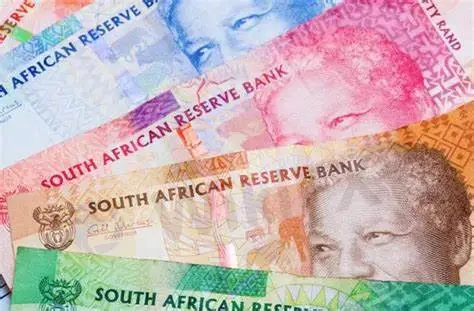简体中文
繁體中文
English
Pусский
日本語
ภาษาไทย
Tiếng Việt
Bahasa Indonesia
Español
हिन्दी
Filippiiniläinen
Français
Deutsch
Português
Türkçe
한국어
العربية
The South African rand is volatile on the market, and equities are falling.
Abstract:On Friday, the South African rand climbed, although it gave up some of its early gains as the dollar gained momentum. Since the beginning of the year, investor mood and trade actions have been swinging back and forth due to uncertainties about the extent and timing of possible US monetary tightening

On Friday, the South African rand climbed, although it gave up some of its early gains as the dollar gained momentum. Since the beginning of the year, investor mood and trade actions have been swinging back and forth due to uncertainties about the extent and timing of possible US monetary tightening. Following less aggressive comments from Federal Reserve Chairman Jerome Powell and largely in line unemployment data in the United States, Fed Governor Lael Brainard said on Thursday that rates will rise in March, helping the dollar's recovery.
The rand was trading at 15.3579 vs the dollar at 1540 GMT, up 0.27 percent from its previous close, although in choppy activity. On Friday, the dollar appeared to be on course to end a three-day losing trend versus a basket of currencies.
“The South African rand has soared against the US dollar since late November 2021, but this may be coming to an end with the Federal Reserve bolstering its already hawkish narrative - favoring a 'buy the dip' strategy,” Warren Venketas, currency analyst at DailyFX, said in a note.According to him, the rand bounce may be coming to an end as the country's shaky economic and political background takes its toll. Following global markets, South Africa's stock market finished down, with banking, financials, mining, and industrials shedding much of their recent gains.
The all-share index (.JALSH) fell 1.01 percent to 75,160 points, while the blue-chip index of the top 40 businesses (.JTOPI) down 1.07 percent to 68,448 points. However, because to a strong mid-week run in tech, commodities, and financial companies, the indices were still over 1.6 percent up on the week. On Friday, the price of the government's benchmark 2030 bond increased, while the yield fell 0.5 percentage points to 9.365 percent.

Disclaimer:
The views in this article only represent the author's personal views, and do not constitute investment advice on this platform. This platform does not guarantee the accuracy, completeness and timeliness of the information in the article, and will not be liable for any loss caused by the use of or reliance on the information in the article.
Read more

WikiFX Forex Prediction Challenge
Unleash Your Trading Influence with Expert Analysis!

The Impact of Interest Rate Decisions on the Forex Market
Interest rate changes determine currency attractiveness, influencing capital flows and exchange rate trends. Understanding this mechanism helps investors navigate the forex market effectively.

How a Housewife Lost RM288,235 in a Facebook Investment Scam
A 47-year-old housewife in Malaysia recently fell victim to an online investment scam, losing a substantial sum of RM288,235 after engaging with a fraudulent scheme advertised on Facebook.

Interactive Brokers Launches Forecast Contracts in Canada for Market Predictions
Interactive Brokers introduces Forecast Contracts in Canada, enabling investors to trade on economic, political, and climate outcomes. Manage risk with ease.
WikiFX Broker
Latest News
INFINOX Partners with Acelerador Racing for Porsche Cup Brazil 2025
The Dark Side of Trading Gurus: Are You Following a Fraud?
WikiFX Forex Prediction Challenge
Currency Calculator







